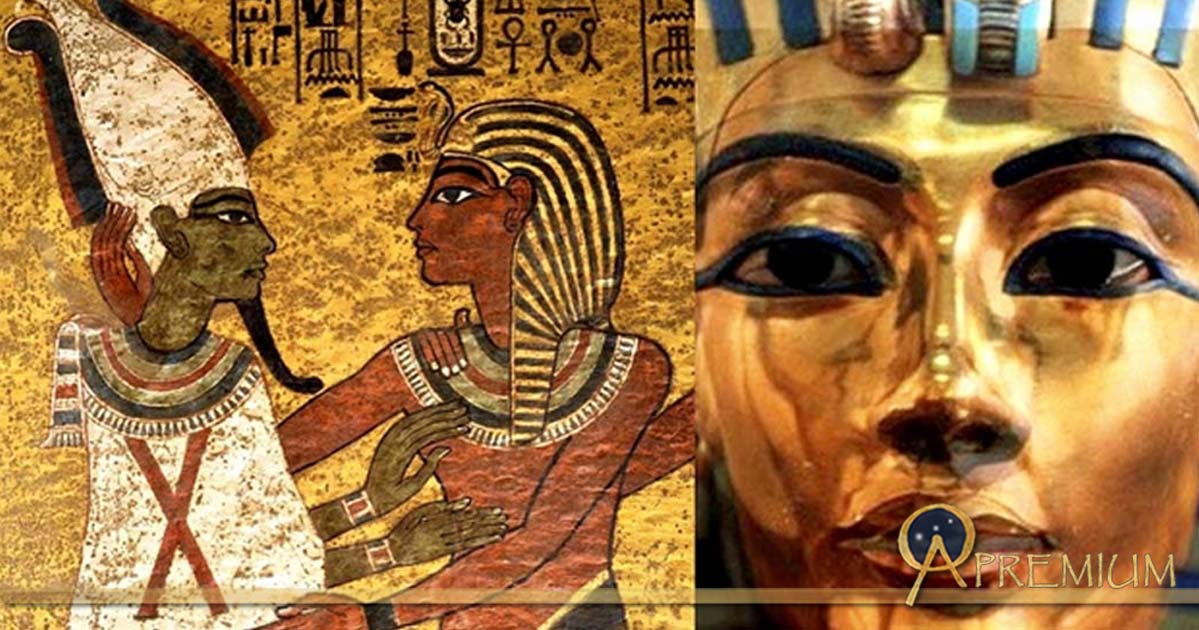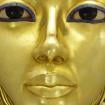Unraveling Tutankhamun’s Final Secret: Enigmatic Sarcophagus the Key to Proof of a Double Burial? – Part II
The sarcophagus in which Tutankhamun was interred upon his untimely demise in the confines of his tomb has for long puzzled Egyptologists. The existence of anomalies on its surface is perplexing. Even though it is obvious today that the coffer was not made with the boy-king’s burial in mind, the question remains, who was it appropriated from, and what’s more, could this grand sarcophagus lead us to the elusive Nefertiti?

Beyond the second rubble fill in the entrance corridor of KV62 was a sight that no archeologist had encountered before: a room (in this case the Antechamber) filled to the brim with pharaonic treasures. (Public Domain)
‘NEB ANKH’ FOR ANOTHER?
The sarcophagus in KV62 displays several oddities in terms of the materials used and decorations upon it. Marianne Eaton-Krauss who has studied the object at length and in great detail, has noted many anomalous features:
“The material of the basin is quartzite, the same stone which was used for the earlier Eighteenth Dynasty royal sarcophagi, down through the reign of Amenhotep III. Akhenaten's choice of granite for both the basin and the lid of his sarcophagus is anomalous. The lid made to fit the quartzite basin in KV62 is also made of granite, not quartzite like the basin; and it is shaped like the roof of a shrine, sloping down from head to the foot. A winged sun disc decorates the front of the lid; and the inscriptions, cut in three vertical columns on it, name Tutankhamen. The texts on the basin also name Tutankhamen as the beneficiary of the protection provided the owner in the Hereafter by the traditional tutelary goddesses Isis, Nephthys, Neith and Serket, as well as the “Four Sons of Horus”, associated with the internal organs removed from the corpse during mummification.”

A replica shows the north side of the sarcophagus found in the tomb of Tutankhamun with the tutelary goddesses protecting the contents within. “Tutankhamun: His Tomb and His Treasures” exhibition at the Museum of Museums, Manchester.
Two of the three columns of text on the top of the lid invoke Anubis and Thoth, orthodox funerary deities who officiated at the ceremony of judging the deceased. The third text is a recitation of the falcon god Behdety, who uniquely assumes the role here customarily played by the sky goddess Nut, protecting the corpse by enveloping it in her winged arms. The sole figural decoration of the lid is Behdety’s icon – a winged sun disk – on the front, explains Marianne.
The goddess figures on the sarcophagus are carved in high relief to the traditional proportions of the pre-Amarna, 18-square grid and delicately picked out in colors. They stand at each of the four corners of the coffer, their winged arms outstretched to envelop the box in a protective embrace. The basin has a cavetto cornice at the top edge, which is balanced at the bottom by a dado of double tyet and djed amulets. Each long side of the sarcophagus is adorned with one horizontal and six vertical columns of deeply incised hieroglyphs and at its westernmost end is an incised Wadjet-eye. The east and west ends of the box are similarly inscribed with a single horizontal band of text and fourteen vertical texts.

In the final scene on the north wall, Tutankhamun is shown wearing the nemes headcloth followed closely by his Ka (not in picture), as Osiris welcomes him into the Netherworld with an embrace.
Marianne Eaton-Krauss is of the firm opinion that the KV62 sarcophagus was not made with Tutankhamun’s burial in mind…
This FREE PREVIEW is just a taste of the great benefits you can find at Ancient Origins Premium.
Join us there ( with easy, instant access ) and reap the rewards: NO MORE ADS, NO POPUPS, GET FREE eBOOKS, JOIN WEBINARS, EXPEDITIONS, WIN GIFT GIVEAWAYS & more!
- Press Announcement: Radar Scans Reveal Hidden Chamber in Tutankhamun Tomb with 90 Percent Certainty
- Tomb Curses of Ancient Egypt: Magical Incantations of the Dead
- Scanning Mummies - What Has Modern Technology Revealed About the Family of Tutankhamun?
- Why did Tutankhamun Have a Dagger Made From a Meteorite?
Independent researcher and playwright Anand Balaji is an Ancient Origins guest writer and author of Sands of Amarna: End of Akhenaten.
Top Image: Collection of Egyptian Art, design by Anand Balaji (Photo credit: Dr Chris Naunton and Roy Lester Pond); Deriv.
By Anand Balaji




















